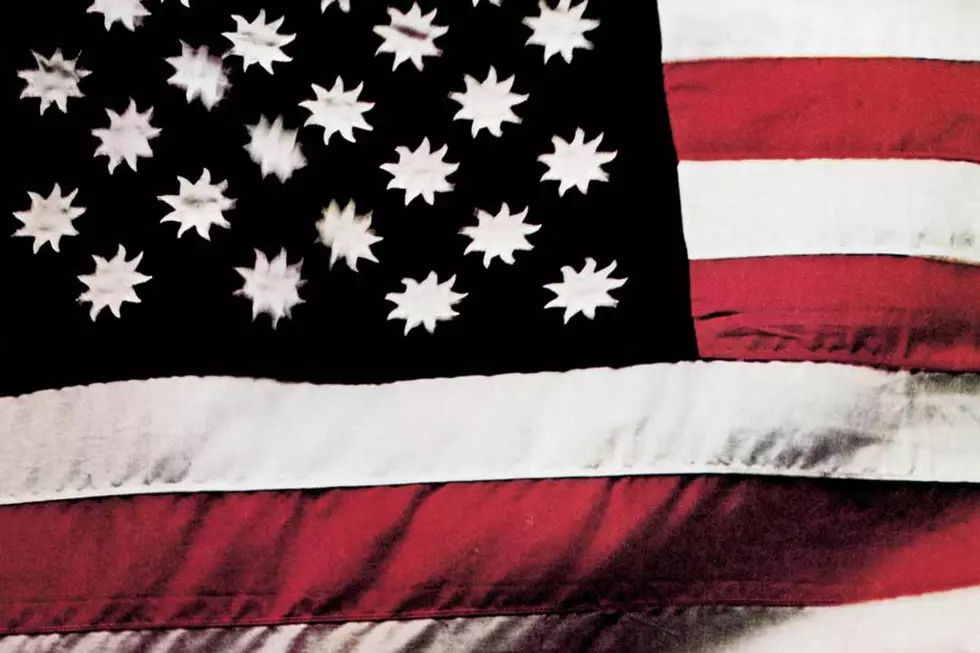
How Sly and the Family Stone Went Mainstream With ‘Dance to the Music’
Sly and the Family Stone had already made their mark as a blended group of forward-thinking musicians before Dance to the Music arrived on April 27, 1968. Both black and white, both male and female, they burst onto the scene with a similarly heady blend of soul, pop and jazz.
"From the moment we got together, Sly [Stone] knew exactly what he wanted," drummer Greg Errico told Rolling Stone in 2015. "He knew he wanted to mix all of these musical elements and he knew he wanted a mixed-race band."
What they hadn't done is make much of a dent in the charts. It's no accident that this finally happened with the Family Stone's second studio effort. Dance to the Music was always meant to be their breakout record. Its success not only bolstered the fledgling band, but helped set the stage for the development of funk as a new musical direction. At this point, it was called psychedelic soul – and the Family Stone suddenly became the standard bearers.
Whether they wanted it that way or not.
Recording under the insistent pop-smart directives of industry heavyweight Clive Davis, Dance to the Music ended up codifying their open-ended jams, harnessing their edgy political ideas, and smoothing out their rough edges. It worked: the title track became Sly and the Family Stone's first Top 10 hit in the spring of 1968. Without it, the Temptations might never have found their voice in the social upheaval of that era, Miles Davis might never have gone electric and untold future stars like Prince, Lenny Kravitz and D'Angelo would have lost a lodestar.
"There's black music before Sly Stone, and there's black music after Sly Stone," Joel Selvin, author of Sly and the Family Stone: An Oral History, told the Washington Post in 2006. "He completely changed what black music was. I mean, he changed Motown! Before Sly, the Temptations were 'I'm Losing You.' After Sly, they were 'Ball of Confusion.' It's a black and white moment."
Lamont Dozier, who composed so many Motown smashes as part of the Holland/Dozier/Holland hit-making triumvirate, would praise Stone for the way he "took music in a new direction, another step forward. He definitely had some potent stuff, and some new stuff, in a new voice. It was this funky, street-y, but pop R&B music. I was very much a fan."
Stone had begun as a hip-cat disc jockey in the mid-'60s on KSOL, San Francisco's soul station, making a name for himself with his cool patter and a willingness to bolster playlists with the occasional song by the Rolling Stones or the Beatles. His new group was no different. All of it – the way they leaped over accepted genre boundaries, the presence of a woman on stage who wasn't a vocalist, the very color of their skin – made big statements at the time.
Listen to Sly and the Family Stone Perform 'Dance to the Music'
"We were political people, and wanted to make statements beyond just dance songs – but Sly knew we had to be better than everyone for people to accept us," Errico told Rolling Stone. "So, Dance to the Music was a conscious effort to do something that would get us there."
They'd finally made their mark, yet Dance to the Music still allowed for plenty of individualism – and it still sounded like nothing else on the radio.
Four singers handed the mic around, while Sly's brother Freddie Stone ripped off gnarled rock-inspired riffs on the guitar, Errico and bassist Larry Graham dug soul-deep grooves and sister Rosie Stone added a polished keyboard sound. Stone himself did a little of everything else, while saxophonist Jerry Martini and trumpeter Cynthia Robinson – who opens the album with an insistent demand: "All the squares go home!" – affixed the exclamation points.
"You had black, white, male, female, and we sounded different to everybody," Graham told the Telegraph in 2012. "One thing that was the genius behind Sly's success as a songwriter and producer was in allowing everybody to be themselves." Along the way, they discovered new ways to convey their essential messages, and new things about the music they wanted to make.
"Dance to the Music was an experiment – because our first album was one of those things where Sly did what he wanted to do with it," Freddie Stone told Wax Poetics in 2014. "After that first album, we started to gain knowledge of commercialism. The task became to do our own thing, but make it commercial, if we wanted people to hear us. We grew as a group to do Dance to the Music and then Stand!"
This group had been galvanized by the Bay Area's free-form '60s aesthetic, however, so the transition wasn't easy at first. "It was so unhip to us," Martini told Joel Selvin. "The beats were glorified Motown. We did the formula thing." Sly Stone, however, felt like they were on to something. Discussing the album's breakout title track, he reportedly told engineer Don Pulese: "That's the best bass and drum sounds I've ever got."
Listen to Sly and the Family Stone Perform 'Are You Ready?'
At times, Dance to the Music can begin to feel like a variation on its hit single's theme – as evidenced by "Dance to the Medley," the three-part, 12-minute closer to Side One. But even here, the Family Stone broke new ground, setting the stage for the 12" megamixes to come. Stone even works in some of his old radio gab, as the Family Stone spreads "L-O-V-E across the nation with a G-double-O-D vibration."
A song titled "Ride the Rhythm" speaks for itself, as does the lover-man balladry of the set-closing "I'll Never Fall in Love Again." In between, the Family Stone sneak in a few notable references to the period's growing cultural divide. "Color Me True" explores the small ways we all sell out (wondering aloud if it's okay to "laugh at the boss's jokes when they ain’t funny?"), while "Are You Ready" talks frankly about race: "Don't hate the black, don't hate the white / If you get bitten, just hate the bite."
Sly and the Family Stone weren't finished experimenting: The sometimes darker, far more free-wheeling Life, released later in 1968, yielded no follow-up hits. (Rolling Stone called Life "the most radical soul album ever issued.") They seemed to be reverting to their pre-pop prime onstage too. Performances of "Dance to the Music," as heard during their opening gig for Eric Burdon and the Animals on Sly and the Family Stone: Live at the Fillmore East, unwound into sprawling nine-minute opuses.
Still, a road map for tighter-focused future successes, including "Everyday People," "Stand!," "Family Affair" and "If You Want Me to Stay," was set by Dance to the Music. Sly and the Family Stone had punched their ticket: "We had pressure from CBS to write a hit, so Sly said, 'Well, okay, we've got to capture the audience and get them to listen. Then we can get more sophisticated and more political,'" Errico told Rolling Stone.
"Sly wrote a song about dancing to the music, but he also injected some of the attributes that the band had – the vocal thing, the black / white / male / female thing, a little vocal breakdown, a drum breakdown, Larry Graham's bass and Freddie Stone's guitar, plus the horns – and to show we're dancing and having fun together," Errico added. "It engaged everybody, but it was designed to get attention so then we would be able to say what we wanted to say."
See Sly and the Family Stone Among 1971's Best Rock Albums
More From










